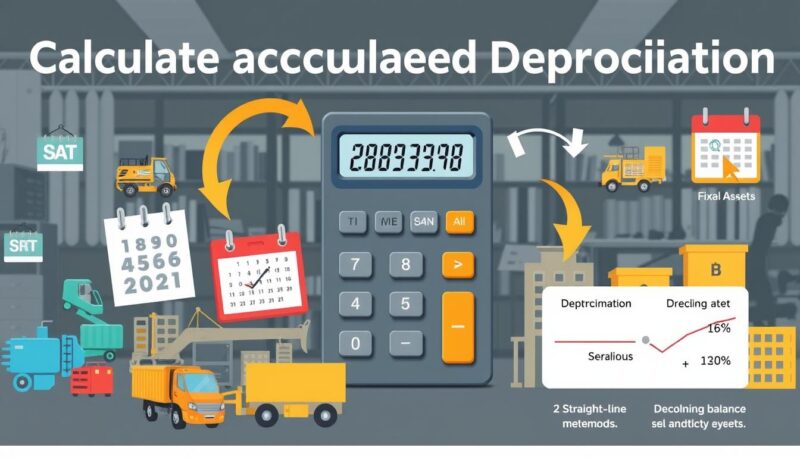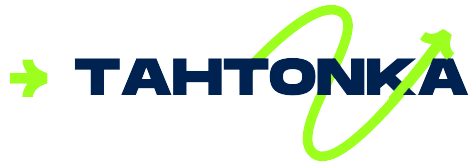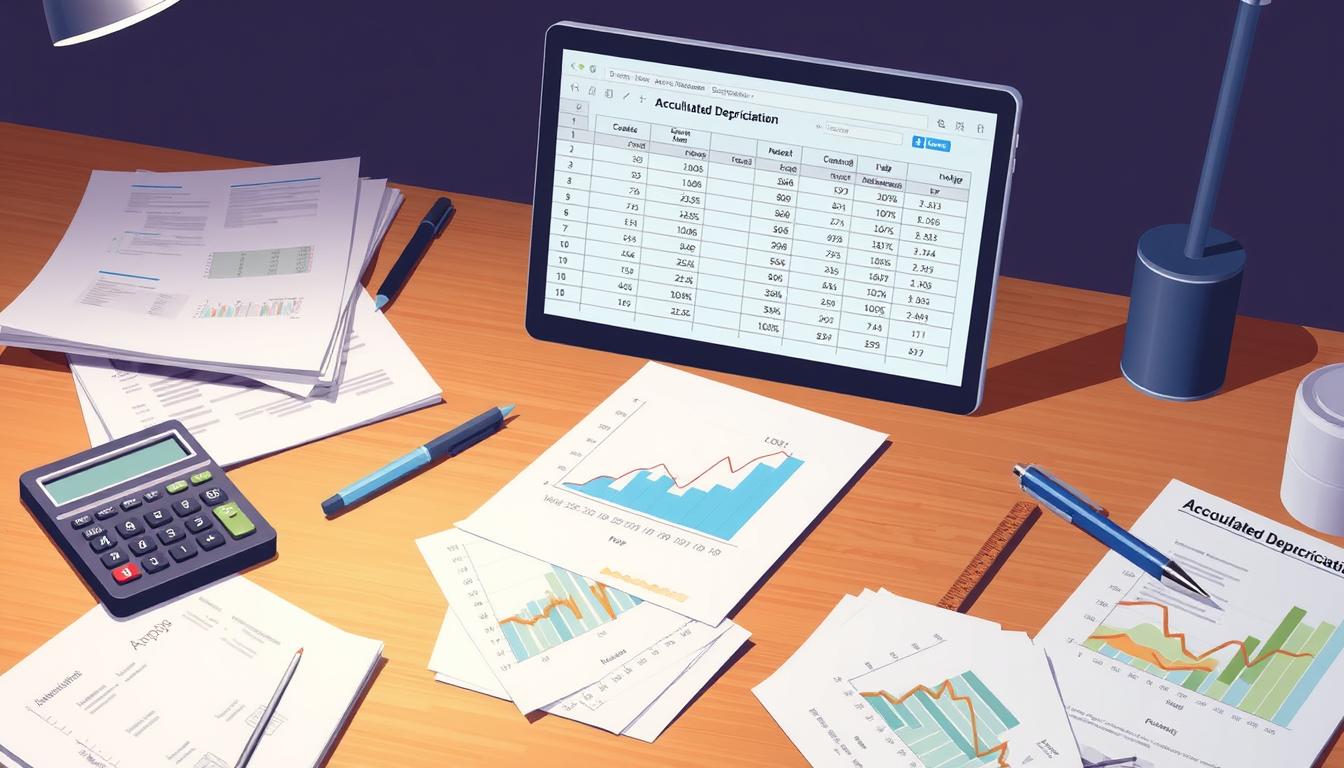Understanding how to calculate accumulated depreciation is essential for every business owner. This process not only impacts your financial statements but also plays a significant role in your overall tax strategy. Accumulated depreciation provides insight into how much of an asset’s value has been used up over time, facilitating effective asset management and compliance with accounting standards.
In this guide, you will discover the importance of accumulated depreciation and how it influences your assets, taxes, and financial records. With accumulated depreciation, businesses can reduce taxable income by spreading the cost of an asset over its useful life. This crucial aspect of financial reporting allows you to maintain accurate records, which can lead to better management decisions and strategic planning. The methods of accumulated depreciation, including different calculation techniques, will be explored, equipping you with the knowledge necessary to navigate the complexities of business depreciation effectively.
Understanding Accumulated Depreciation
Accumulated depreciation explained provides key insights into how businesses track the value of their fixed assets over time. This concept reflects the total depreciation expense charged to an asset since its acquisition, offering a clearer perspective on a company’s financial health. Recognizing accumulated depreciation is crucial for making informed decisions regarding asset management and investment strategies.
Definition and Importance
Understanding accumulated depreciation is essential for assessing the carrying value of assets on the balance sheet. It appears in a contra asset account, which means it reduces the gross value of fixed assets. The importance of this concept goes beyond accounting; it affects financial reporting and investment considerations. For instance, the tax implications of depreciation play a significant role in determining taxable income, as businesses can deduct depreciation expenses from their earnings.
Components of Accumulated Depreciation
The calculation of accumulated depreciation involves several critical components:
- Original Cost: The initial purchase price of the asset.
- Useful Life: The estimated period the asset will be usable before it is no longer economically viable.
- Salvage Value: The estimated value at the end of its useful life.
These components are integral to calculating depreciation using various depreciation methods for businesses. Popular methods include the straight-line method and the declining balance method, each producing different financial outcomes. The straight-line method allocates depreciation evenly across the asset’s life, while the declining balance method depreciates the asset based on its remaining book value. The choice of method can significantly impact financial statements and tax calculations.
| Method | Description | Impact on Financial Statements |
|---|---|---|
| Straight-Line | Evenly distributes depreciation expense over the useful life of the asset. | Creates stable annual expenses. |
| Declining Balance | Depreciation recorded as a percentage of the asset’s current book value. | Results in higher initial expenses. |
| MACRS | A method set by the IRS, mainly for tax purposes. | Accelerates deductions for tax benefits. |
Recognizing changes in accounting estimates can affect annual accumulation without retroactive adjustments. The distinction between accumulated depreciation and accelerated depreciation is noteworthy; the former reflects the cumulative reduction in book value over time, while accelerated methods emphasize earlier expense recognition. Following these principles cultivates a better understanding of asset valuation and its influence on financial reporting.
How to Calculate Accumulated Depreciation
Understanding how to calculate depreciation is essential for businesses to maintain accurate financial records. Accumulated depreciation represents the total depreciation expense recorded for a fixed asset since its acquisition. This section provides a step-by-step calculation process, along with various depreciation methods for businesses, enabling you to effectively manage your assets.
Step-by-Step Calculation Process
The accumulated depreciation calculation can be approached in several steps. Knowing the asset’s cost, estimated useful life, and salvage value is critical for effective determinations. Here is the formula for the straight-line method of calculating accumulated depreciation:
- Accumulated Depreciation = ((Cost of the Asset – Salvage Value) / Life of the Asset) × Number of Years
For a simplified method, calculate the annual depreciation expense as follows:
- Annual Depreciation = Depreciation Factor x (1 / Lifespan) x Remaining Book Value
This approach allows businesses to align depreciation expenses with their financial reporting needs, ensuring compliance with generally accepted accounting principles (GAAP).
Different Methods of Depreciation
Several depreciation methods suit different types of assets and business needs. Here are some commonly used methods:
| Method | Formula | Best Use |
|---|---|---|
| Straight-Line | Accumulated Depreciation = ((Cost – Salvage Value) / Useful Life) × Years | Assets with equal usage over time, such as buildings. |
| Declining Balance | AD = (Current Book Value × Depreciation Rate) + Previous Years’ Depreciation | Assets that lose value quickly, like vehicles and technology. |
| Double Declining Balance | Annual Depreciation = Depreciation Factor x (1 / Lifespan) x Remaining Book Value | Assets with rapid obsolescence, suitable for electronics. |
| Sum of the Years’ Digits | Depreciation Expense = (Remaining Useful Life / Sum of The Years’ Digits) x Depreciable Cost | Assets that are expected to lose value more quickly in the early years. |
| Units of Production | DE = (Asset Cost – Salvage Value) / Estimated Units × Actual Units Produced | Assets whose usage varies significantly, like manufacturing equipment. |
Each method has distinct advantages and aligns with various operational needs. Understanding these options assists in effective asset management and tax planning, ultimately impacting your financial statements.

Conclusion
Understanding accumulated depreciation is crucial for any business owner aiming to manage their financial health effectively. This business depreciation guide has explained how accumulated depreciation reflects the total decline in the value of an asset over time, a key component that impacts your financial statements. By employing different methods like straight-line, declining balance, or units of production, you can accurately calculate your assets’ depreciation and make more informed financial decisions.
The calculation process not only aids in complying with accounting standards such as GAAP and IFRS but also provides significant tax advantages. By recognizing depreciation as an expense, you can reduce your taxable income, making it a strategic financial tool for your business. Additionally, understanding net book value helps you assess your assets’ remaining worth, vital for gain or loss on disposal.
Furthermore, as discussed, accumulated depreciation influences financial ratios such as return on assets and fixed asset turnover, which are essential for evaluating your company’s performance. By grasping these concepts, you can enhance your strategic planning for asset management, leading to better financial outcomes and an improved overall understanding of your business’s financial landscape.

